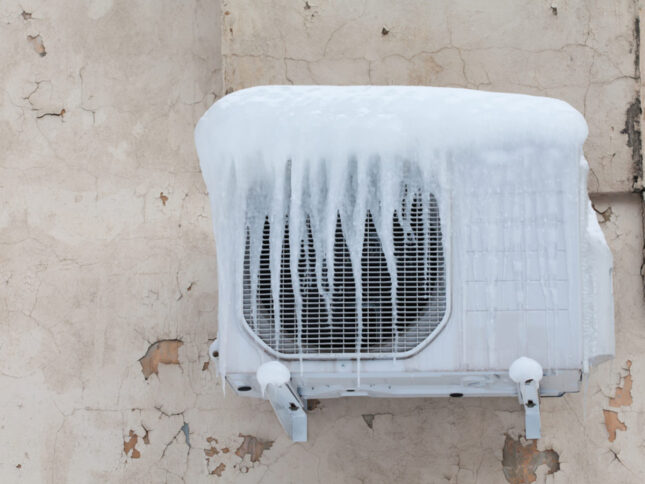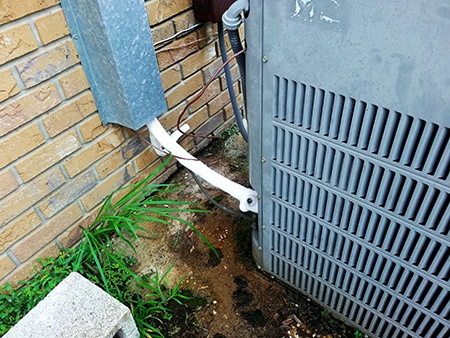What to I Do If My AC Pipe Is Frozen? - Key Tips for Fixing Functionality
What to I Do If My AC Pipe Is Frozen? - Key Tips for Fixing Functionality
Blog Article
Just about every person seems to have their personal opinion when it comes to Have a Frozen AC Line? Here’s How to Fix It.

Intro
Uncovering that your air conditioner pipeline is frozen can be concerning, especially throughout warm summer season when you depend on your air conditioner one of the most. Recognizing what to do in such a circumstance is critical to prevent further damage to your cooling system and ensure your comfort inside your home.
Recognizing the Causes
Numerous aspects can add to the cold of an air conditioner pipe. Comprehending these causes can help you resolve the concern successfully.
Lack of Airflow
One usual reason for a frozen air conditioning pipe is inadequate airflow. When the air movement over the evaporator coil is limited, it can trigger the coil to drop below freezing temperature, bring about ice formation on the pipeline.
Low Refrigerant Levels
Inadequate cooling agent levels in your air conditioner system can also lead to an icy pipeline. Low refrigerant degrees can create the stress in the system to drop, bring about the cold of moisture on the evaporator coil.
Cold Weather Conditions
In cooler climates, freezing temperatures outside can add to the freezing of air conditioner pipes. If your air conditioning unit is not appropriately insulated or if there are leakages in the ductwork, cool air can infiltrate the system, creating the pipe to freeze.
Dirty Air Filters
Unclean or clogged air filters can limit air movement in your AC system, resulting in numerous problems, consisting of an icy pipe. It's necessary to replace or cleanse your air filters consistently to make sure appropriate airflow and protect against ice accumulation.
Signs of a Frozen Air Conditioner Pipe
Acknowledging the signs of an icy AC pipeline is essential for punctual action.
Decreased Airflow
If you see a significant reduction in airflow from your vents, it could suggest an icy pipe.
Ice Buildup on the Pipe
Visible ice accumulation on the cooling agent line or the evaporator coil is a clear indication of a frozen air conditioner pipeline.
Unusual Sounds from the Unit
Unusual audios, such as hissing or gurgling, coming from your air conditioner system can signal that there's ice existing on the pipe.
Immediate Actions to Take
When confronted with a frozen AC pipeline, it's essential to act promptly to prevent more damage to your air conditioning system.
Turning off the AC
The very first step is to turn off your a/c unit to stop the system from running and intensifying the problem.
Looking for Blockages
Inspect the area around the indoor system for any kind of obstructions that might be obstructing air movement, such as furniture or curtains.
Thawing the Pipe
You can use gentle techniques like putting towels soaked in warm water around the icy pipeline to aid thaw it gradually.
Safety nets
Taking safety nets can aid stay clear of future events of an icy a/c pipe.
When DIY Methods Fail
If your attempts to thaw the pipeline or address various other issues are unsuccessful, it's time to employ a professional.
Value of Hiring a Professional HVAC Technician
A licensed HVAC technician has the proficiency and devices needed to detect and fix issues with your a/c system securely and effectively.
Regular Maintenance Checks
Arrange routine maintenance consult a professional HVAC specialist to guarantee that your air conditioning system is running efficiently.
Changing Air Filters
Routinely change or clean your air filters to prevent air movement limitations and preserve optimum performance.
Insulating Exposed Pipes
If your a/c pipes are subjected to cold temperatures, consider shielding them to prevent cold throughout winter season.
Looking For Professional Help
If DIY methods stop working to settle the issue or if you're not sure concerning how to continue, it's ideal to look for assistance from a qualified HVAC service technician.
Verdict
Dealing with a frozen AC pipeline can be an irritating experience, yet knowing just how to react can aid decrease damages and recover convenience to your home. By comprehending the causes, acknowledging the indications, and taking prompt activity, you can properly resolve the issue and stop future events.
What to Do If Your AC Line Is Frozen
Make Sure All Supply and Return Air Vents Are Open
If you notice problems with airflow, the first thing you should do is check your supply and return vents. Supply vents distribute clean, conditioned air throughout your home. As this air becomes stale, it’s pulled into the return vent, where it’s reconditioned before being sent back out through the supply vent.
When these vents are closed, air won’t flow in the home. Before examining your AC, check the vents in every room and ensure they’re all open.
Check for a Dirty Air Filter
Another possible cause of limited airflow is a dirty air filter. Your air conditioner’s filters catch elements you don’t want to breathe in, such as dirt and dust. Over time, filters can become clogged, ultimately blocking air from flowing in and out. The lack of airflow can then cause the entire coil to freeze and will completely restrict any air from moving through it. The AC may need to be powered off for one to two days to allow the coil to thaw after replacing the filter to allow proper functioning of the unit. This debris can also accumulate on your AC’s evaporator coil, requiring a more serious repair. In general, air filters should be cleaned regularly (about every two weeks).
Assess Your Outdoor Unit
In addition to checking your AC, assessing the outdoor unit is a good idea. Also known as the condensing unit, it works with your interior unit to release heat outside. An issue with the outdoor unit can result in rising internal temperatures.
Overgrown Shrubs or Clogged Leaves
From leaves and twigs to shrubs and debris, there’s no shortage of outdoor elements that can accumulate around your condensing unit. When these elements get lodged inside the unit, they can block airflow. Fortunately, removing the blockage can solve the problem.
Sounds of a Broken Fan
Shrubs and leaves aren’t the only things that can impede your outdoor unit’s airflow. If the fan is broken, the unit won’t be able to properly get rid of heat — which means the internal temperature won’t go down. First, make sure the fan is spinning. If it is, check for the following sounds of a broken fan:
Buzzing Rattling Screeching Hissing Clicking Preventative Measures
Nobody wants to deal with a frozen AC line. In addition to causing problems with your air conditioner, they require professional repairs. On the bright side, there are preventative measures you can take to help ensure this issue doesn’t arise in the first place.
https://www.coopergreenteam.com/blog/what-to-do-if-ac-line-frozen

Do you enjoy reading up on Have a Frozen AC Line? Here’s How to Fix It? Try to leave feedback below. We'd be glad to see your opinions about this article. In hopes that you visit us again in the near future. Be sure to take a moment to promote this post if you enjoyed it. Thanks for going through it.
Book Your Appointment Report this page